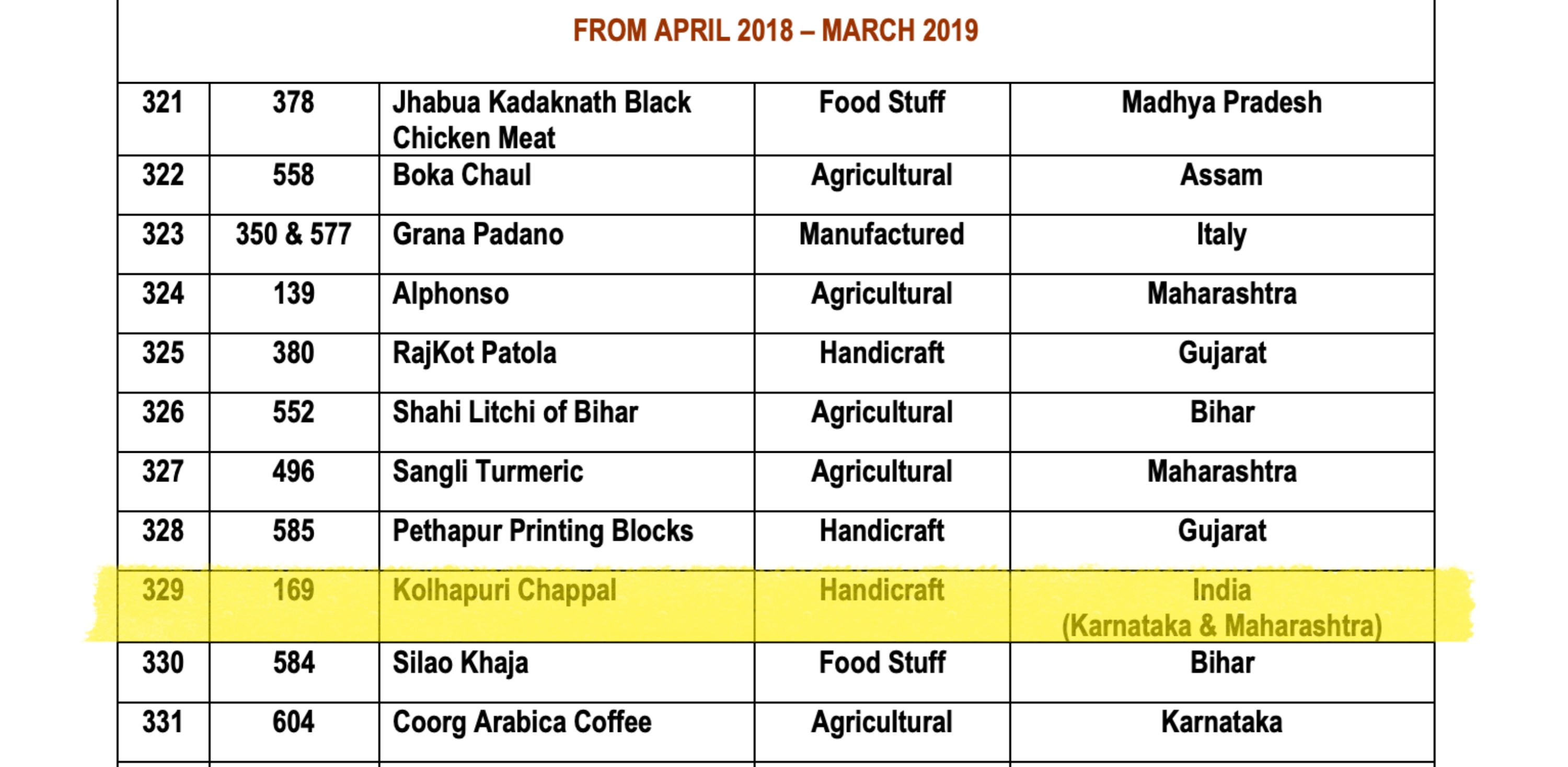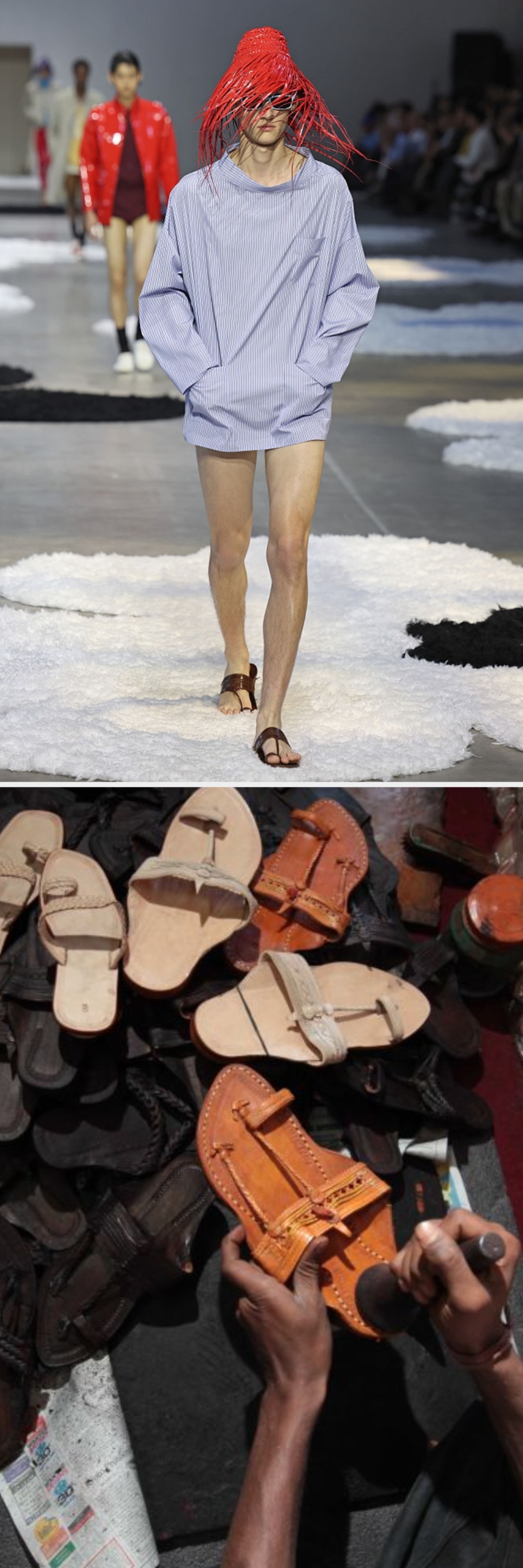So I was minding my own business, scrolling through Prada’s Spring 2026 menswear show (as one does), when I saw something oddly familiar on the runway.
Flat leather sandals. T-strap. Minimal. Wait a minute. Are those… Kolhapuris?

Turns out, I wasn’t the only one squinting at my screen.
Prada’s menswear collection, shown at the sunlit Fondazione Prada in Milan, had all the usual high-fashion suspects: floaty tunics, flowerpot hats, lots of “soft structure.” But what really stole the show (and the internet)? A pair of sandals that looked exactly like the ones sold on street corners across India—the iconic Kolhapuri chappal.

Except now they’re being referred to as “toe ring sandals.” And they reportedly cost over $1000. *Insert collective desi gasp*
Instagram wasted zero time. Comments started pouring in under Prada’s video:
“Why they wearing Indian flats???”
“Kolhapur—a royal city from Maharashtra, INDIA 🇮🇳. Atleast be considerate enough to give credit to right people and right source...”
“At this price you can take a trip to Maharashtra and buy many original Kolhapuris for ₹250-₹3000.”
I mean, they’re not wrong.
Kolhapuris have been handmade by artisans across Maharashtra and Karnataka for generations. Real ones are made using sun-dried buffalo hide, stitched completely by hand, and don’t use any glue or synthetic material. It can take up to two weeks to make a single pair. So yeah, there's craftsmanship, but it’s been happening long before the runway decided to catch up.

The chappals even got a GI (Geographical Indication) tag in 2019. That’s like the government officially going: “Yep, these are ours. Back off.”

To be clear, Prada didn’t say these are Kolhapuris. But fashion stylist Anaita Shroff Adajania posted side-by-sides on her story, with the caption, "called it! Prada kohlaprui chapals" and honestly? It’s giving Ctrl+C, Ctrl+Luxury.

Look, I’m all for Indian design getting global love. It is cool seeing something from home take a stroll down a Milan runway. But when there’s no shoutout to where it came from or who makes it—just a vague "genuine, nice" vibe—it feels kinda… off.
Because when your nani’s chappals end up on a luxury catwalk with zero context and a five-figure price tag in rupees, it’s no longer just a fashion story. It’s a visibility story. An authenticity story. A who’s getting credit and who’s getting erased story.
And yeah, this isn’t Prada’s problem alone.
We’ve also seen Indian dupattas suddenly pop up on Pinterest as “Scandinavian scarves.” And some fashion brands are debuting a crop top, a flared skirt, sometimes with a matching scarf. Sounds familiar? Of course it does. That’s literally just a lehenga.
None of this is new to us. What’s new is the way it’s being renamed, resold, and rebranded, while the actual communities and artisans behind it are left out of the picture entirely.

